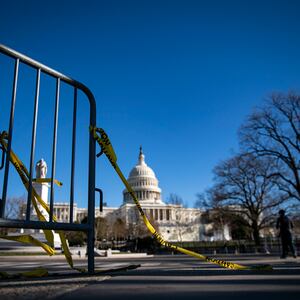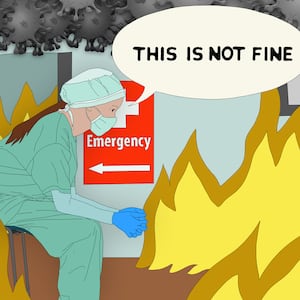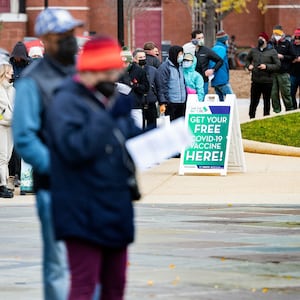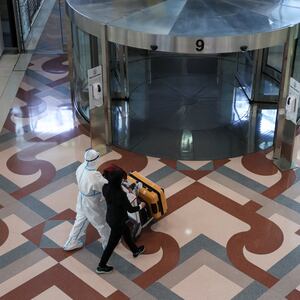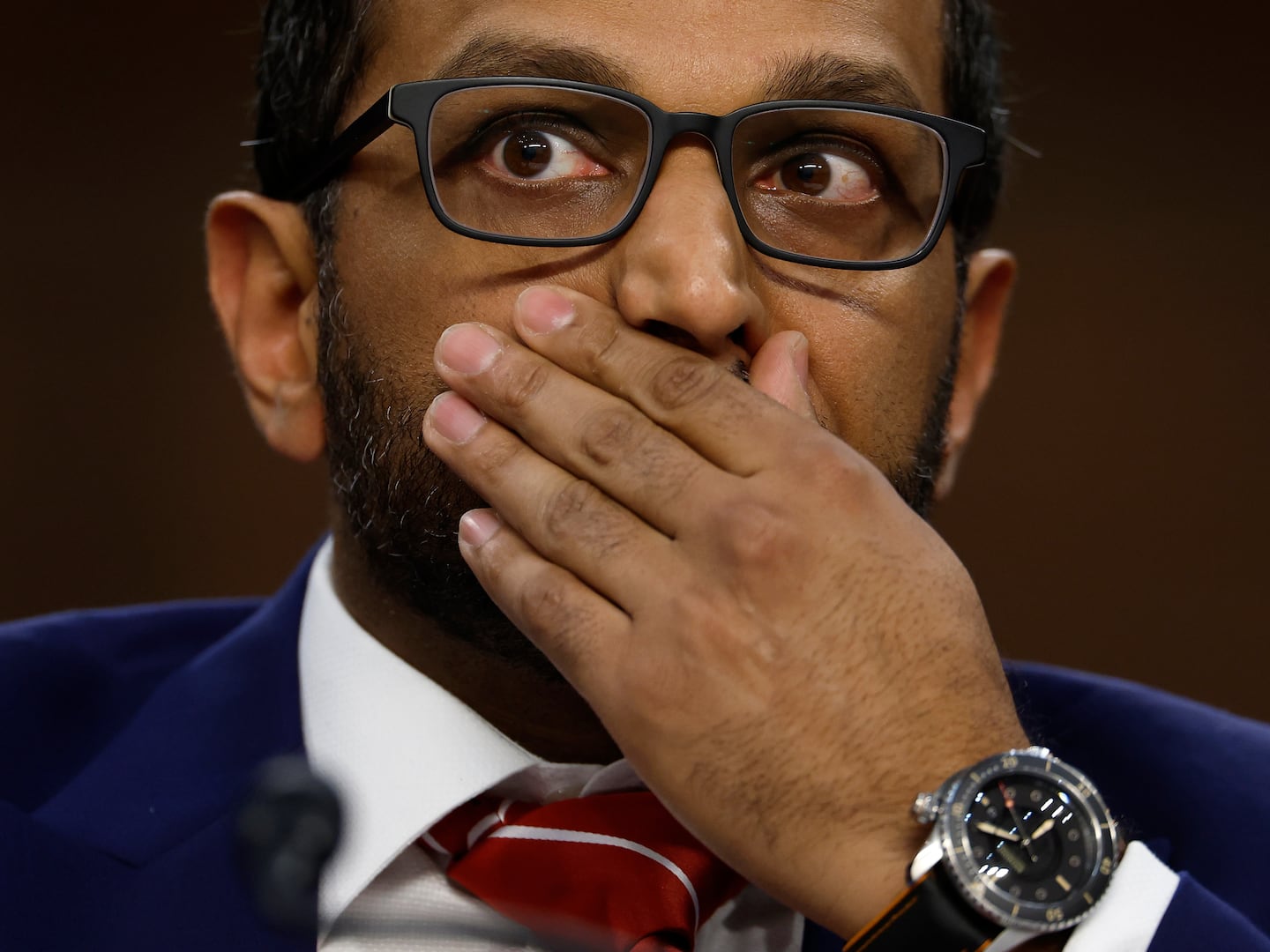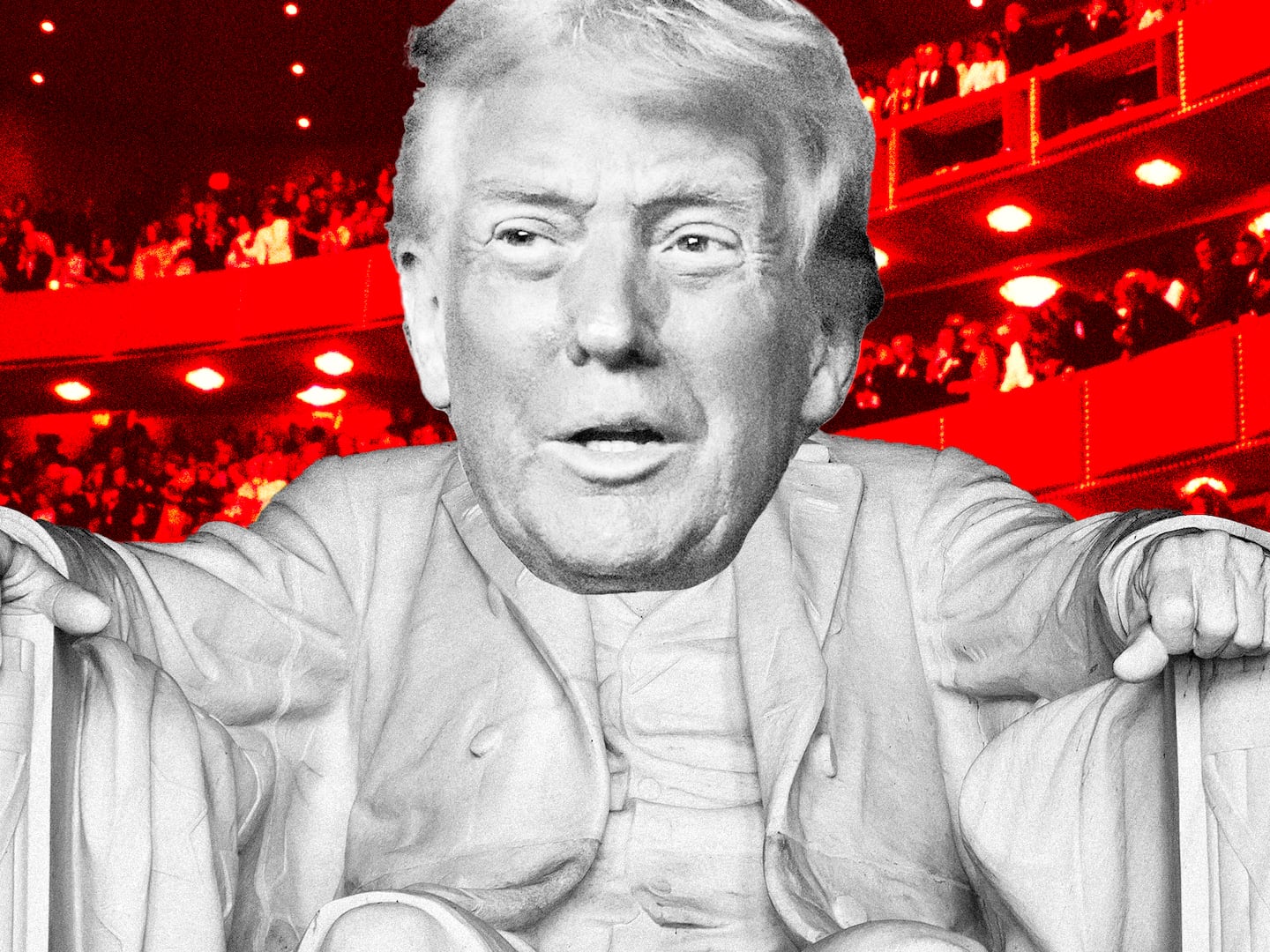When the new Omicron strain of COVID-19 emerged last week, it hinted at the exact worst-case scenario that lawmakers and public-health advocates have been hoping to mitigate through action in Washington.
For months, they have pushed Congress to approve a huge pot of funding—at least $30 billion—to help strengthen science and public-health infrastructure, in hopes of giving the United States a head start when another pandemic emerges.
But this same stubborn pandemic is making those long-term investments look like matters of shorter-term survival. Scientists are concerned that the Omicron variant—which has an unusually high number of mutations and is already feared to be dramatically more transmissible than the Delta variant—could derail a shaky global COVID recovery.
More information is expected soon, but if the new strain renders current vaccines less effective, scientists will have to rush to develop, manufacture, and distribute new ones; in any case, they’ll need stronger tools to identify the inevitable future variants.
Against that backdrop, Congress might be expected to surpass the $30 billion investment in science and public health that was requested by advocates, lawmakers, and President Joe Biden himself earlier this year.
Instead, they’re going in the other direction. The version of Biden’s $1.75 trillion social spending bill that passed the House last month contains $10 billion in public-health and pandemic preparedness funding—a two-thirds cut from what had been requested. Of that $10 billion, $3 billion was earmarked specifically for biomedical research and development, with the remainder going to an array of public-health infrastructure-focused programs.
Rep. Ritchie Torres (D-N.Y.) told The Daily Beast that the legislation was a “missed opportunity” to go bigger on pandemic preparedness and added the new variant should be a “wake-up call” for Congress to get it done before the Build Back Better Act gets to Biden’s desk.
“We ought to strike while the iron is hot, and the iron has never been hotter than it is now,” Torres said.
Some public-health experts agree that, while new funding is better than no funding, missing this moment is risky.
Dr. Boris Lushniak, dean of the University of Maryland’s school of public health and former acting U.S. surgeon general under Barack Obama, said a $30 billion investment could help the country put COVID behind and prepare for future pandemics. Far less than that, he said, is “not enough.”
“Every single time we thought we had figured out COVID, every time we thought we had this baby figured out, what has it done? It’s given us a sucker punch,” Lushniak told The Daily Beast.
“Whether this level of funding will be applicable to this pandemic,” he added, “depends on how many sucker punches are left in the virus.”
Biden and Democrats in Congress have staked their credibility with the public on stopping those sucker punches. They have consistently argued that an aggressive focus on curbing the pandemic is the key to easing the economic pain many Americans are feeling, along with the many other ills that have stemmed from COVID.
In that light, it puzzles some advocates that Democrats are not making the most of this opportunity to mitigate this pandemic and potentially future ones, too.
The political constraints of having thin majorities in Congress, however, has forced a scaling-back of ambitions across the board. Democrats wanted to use the so-called Build Back Better Act as a vehicle for lots of historic investments, pandemic preparedness included. The $3.5 trillion bill that the party outlined over the summer is now half that size, and many priorities have already been scrapped.
News outlets began reporting in July that the pandemic preparedness funding was at risk of suffering dramatic cuts. The Daily Beast has inquired for months about why it faced disproportionate reductions, and if any lawmakers were pushing for them. The simplest answer from sources familiar with the process had been that in a crowded bill, the idea simply had fewer champions.
But as the Omicron variant underscores the need for a strong scientific infrastructure, few are holding their breath that the Senate will build on the House bill’s funding, as Senate Democrats rush to pass the package by Christmas.
Key lawmakers also stress that this hardly represents their final chance to invest in public health infrastructure. Another opportunity is Congress’ annual spending bill, though that package could be delayed for months, with Democrats and Republicans also disagreeing on how much Congress should spend on the government.
Meanwhile, the lawmaker who has jurisdiction over the pandemic preparedness fund—Sen. Patty Murray (D-WA), chair of the Senate Health, Education, Labor, and Pensions Committee—has been an advocate of more money for it. .
In a statement to The Daily Beast, Murray said she was pushing for more of those dollars as part of the Build Back Better Act, as well as in next year’s budget, where she proposed an additional $3 billion for the Assistant Secretary for Pandemic Response, an office within the Department of Health and Human Services.
So far, it seems Democrats are likely to have little help from Republicans. During the Biden era, the GOP has made clear it is done supporting more money to counter the pandemic.
However, according to a committee aide, Democratic and GOP committee staff have been working on a bipartisan pandemic preparedness bill, which Murray and Sen. Richard Burr (R-N.C.) are aiming to release “soon.”
“When this pandemic hit, our public health system was underfunded, our nation was unprepared, and our families paid the price,” Murray said. “We need to remember that when it comes to public health and preparedness, an ounce of prevention is worth a pound of cure.”
To the advocates who have been pushing for a robust pandemic preparedness investment, the emergence of the Omicron variant—not to mention the stubborn persistence of the Delta strain—are underscoring the urgency of what had previously been a more challenging long-term sell to policymakers.
Gabe Bankman-Fried, director of Guarding Against Pandemics, an advocacy group focused on pandemic preparedness, offered several examples of how going big on certain investments could help the U.S. fight COVID in the short term.
Much of the proposed funding on the research and development front goes toward the ASPR office, which is home to BARDA, the Biomedical Advanced Research and Development Authority, the federal government’s outfit for vaccine development.
That’s essential in the eyes of supportive lawmakers, like Torres. “We want to make sure an agency like BARDA can create a pipeline of vaccines, therapeutics, and diagnostics the moment a public health emergency arises,” he said.
Bankman-Fried said a robust investment in that office would, for one, support expanding vaccine production capacity. That could be essential sooner rather than later, if Omicron—or a future variant—requires a reworking of COVID vaccines.
But that funding could also strengthen the array of tools U.S. scientists use to identify and track new variants. Bankman-Fried pointed to metagenomic sequencing, a technology BARDA has invested in to study variants but is currently of limited use.
“If we had much cheaper metagenomic sequencing,” he said, “we could have caught Omicron earlier.”
Experts, like Lushniak at the University of Maryland, say it is hard to provide an exact estimate of just how much money Congress would need to spend to prepare for a COVID worst-case scenario, or for future pandemics. But, as Benjamin Franklin once advised, an ounce of prevention can be worth a pound of cure..
According to the Washington Post, the White House estimates that a new round of vaccines for the entire country could cost as much as $7.5 billion—more than double the amount of research and development-specific funding that’s currently in the Build Back Better Act.
And a more dangerous Omicron variant could prompt Congress to approve a special spending bill to counter it, which lawmakers did several times in the first months of the COVID pandemic in 2020—spending trillions.
Bankman-Fried, whose group has attempted to keep the issue alive in Congress amid a rush of competing issues and priorities in the vast bill, suggested that securing more funding wouldn’t be easy.
“The problem we run up against is that there’s no lobby for this. It’s not sexy,” he said. “We’re happy about the funding, but there needs to be more.”


